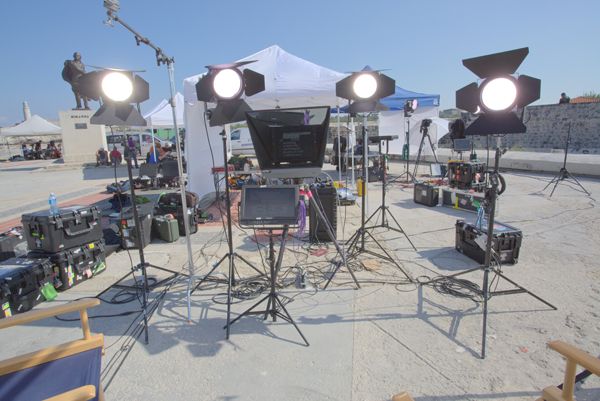LED lights are becoming increasingly popular within the film industry, and their ease of use, affordability and availability mean that this trend is set to continue for many years to come.
LED lights have many benefits over and above the usual traditional incandescent, fluorescent and halogen options, and as specialists in providing first-class lighting services in Florida, we are fully aware of just how useful LEDs can be.
Here are just 7 reasons why we love using LED’s to offer our clients awesome lighting solutions.
-
They are super energy efficient
LED lights use about 50 percent less electricity than traditional incandescent, fluorescent and halogen bulbs do. This, in turn, makes them far more energy efficient, and cheaper to run. LEDs also aim light in a specific direction unlike conventional bulbs, which emit light in all directions. This unique capability to direct light in one direction helps to also reduce the risk of wasted light and energy. This directional lighting capability reduces wasted light and energy.
-
They last way longer
LEDs don’t “burn out” or fail like incandescent bulbs do. Instead, they start to dim over time. Quality LEDs have an expected lifespan of 30,000–50,000 hours or even longer, depending on the quality of the lamp or fixture, whereas a typical incandescent bulb lasts only about 1,000 hours. A longer life means less need to replace them, saving you both time and money in the long run.
-
They keep their cool
With less than 10 percent of the power used by incandescent lamps being converted to visible light, the leftover energy makes them very hot to use and touch. Such excessive heat and ultraviolet radiation (UV) presents a burn hazard to people and materials, especially on hot, close-knit film sets and in studio. LEDs emit virtually no IR or UV meaning that they remain cool and present virtually no risk of overheating.
-
They offer instant light
Many traditional light sources can take up to 3 minutes to provide full brightness. LED lights, however, come on at 100-percent brightness almost instantly, meaning you can get filming right away without having to wait. This also makes them an excellent choice for large sets or spaces, like sports fields, that need to flood with light very quickly.
-
They are really tough
Because there are no filaments or glass enclosure to worry about, LED lights are resistant to breakages and mostly immune to vibrations, falls and other impacts. Because they are mounted on a circuit board and connected with soldered leads, they are not completely unbreakable, but they certainly are a whole lot tougher than regular light bulbs are.
-
They can be easily controlled
Some lighting systems are really difficult to control. LEDs, however, can act as semiconductor devices making them incredibly easy to control. Some LEDs can even be dimmed to 10 percent of light output while most fluorescent lights only reach about 30 percent of full brightness. LEDs also offer continuous, opposed to step-level, dimming (where the shift from the 100-to-10-percent light output is smooth and seamless, not tiered).
-
They offer amazing color capabilities
Modern LED lights can offer beautiful variations in color and brightness that can completely change the way your audience see the subject. Choose from extra warm white 2700K, warm white 3000K or cool white 4000K for subtle differences in standard white light, and just about a gazillion different colors if you need something different.
LED Lighting from Frank Gatto & Sons
We offer amazing film and TV lighting solutions across Florida and beyond. Speak to us today at (561) 368-0101 to find out more.
Frank Gatto & Associates, Inc. are specialists in lighting for television events of all kinds. If you have an event that needs expert lighting, please call us today to see how we can help.
Phone: 561-368-0101
Email: frank@frankgattolighting.com
We can be found on Social Media at the following links.


